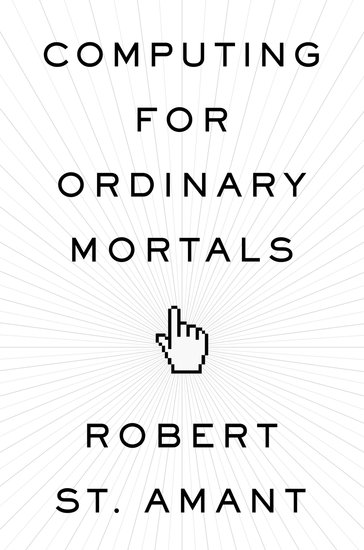Try this experiment: Ask someone to name three tools, without thinking hard about it. This is a parlor game, not a scientific study, so your results may vary, but I’ve done this dozens of times and heard surprisingly consistent answers. The most common is hammer, screwdriver, and saw, in that order.
We seem to share a basic understanding of what tools are and how they’re used. This may be only natural; tools fill our lives. It’s hard to imagine going through your daily routine without them. You can’t brush your teeth or comb your hair; locked doors stay locked; mealtimes, in the preparation and the eating, are messy affairs. As Thomas Carlyle said, “Man is a tool-using animal. Without tools he is nothing, with tools he is all.”
But what does it mean to use tools? This question is of special interest in the area of animal behavior–many non-human animals use and even make tools. In 1980, Benjamin Beck published a book on the subject, Animal Tool Behavior, which catalogues hundreds of examples. (The first edition is out of print and was for a time extraordinarily expensive; when I first started searching for a copy online, I found just one at a price of $626.43. This is sometimes the nature of classic texts.)
Defining tool use is trickier than it might seem. A crow stripping a leaf stem and using it to fish for insects in soft wood? Tool use. Nest making with leaves and twigs? Not tool use. A wasp pounding earth down into a nest with the help of a pebble? Tool use. An otter balancing a rock on its chest to use as an anvil for pounding open molluscs? Tool use. A chimpanzee pounding open a nut on rocky ground? Not tool use. A gorilla using a stick to test the depth of water it intends to wade through? Tool use. A chimpanzee waving a leafy branch to intimidate an intruder? Only ambiguously tool use… The examples go on.
Beck directly took on the issue of definition:
Thus tool use is the external employment of an unattached environmental object to alter more efficiently the form, position, or condition of another object, another organism, or the user itself when the user holds or carries the tool during or just prior to use and is responsible for the proper and effective orientation of the tool.
It’s complex, in part because of the wide range of activities we interpret as tool use — and those we don’t. Notice that a definition purely in terms of physics won’t do. Using a rock held in the hand to break open an egg is tool use, but cracking the egg on a fixed hard surface is not, even if the forces are the same. And the intention of the tool user (Beck’s reference to responsibility) seems relevant as well. Incidental use of objects shouldn’t count. Sometimes a chimpanzee fleeing through the forest canopy might accidentally dislodge sticks that discourage a pursuer, but this doesn’t match our intuitions about tool use. Beck’s definition offers a reasonable compromise on a set of conditions for the behavior.
My students and I were interested in tool use because of its potential implications for robotics. Could the physical and cognitive abilities that enable animals (including humans) to use tools be translated into computational form? We worked with Beck’s definition for a time and eventually developed a simple software architecture that allowed a robot, which we called Canis habilis, to carry out a simple tool-using task.
Alex Wood’s Canis habilis
Our interest in the use of tools by animals remained. We read the literature. We talked with cognitive scientists, animal behavior researchers, and philosophers of mind. I exchanged a few email messages with Dr. Beck. Gradually we developed a new perspective on tool use:
Tool use is the exertion of control over a freely manipulable external object (the tool) with the goal of (1) altering the physical properties of another object, substance, surface or medium (the target, which may be the tool user or another organism) via a dynamic mechanical interaction, or (2) mediating the flow of information between the tool user and the environment or other organisms in the environment.
I won’t go into a detailed motivation for the new definition, but I’ll note that we weren’t able to produce one that’s less complex than Beck’s, and some of the terms we use are themselves hard to define precisely. Do wasps have “goals”? Does “the flow of information” encompass communication? Despite its limitations, the new definition appealed to us, and Thomas Horton (my Ph.D. student at the time) and I eventually placed our work in the journal Animal Behaviour. We were happy. Thomas and I are computer scientists, outsiders to the field of animal behavior, but we’d learned enough to say something interesting. We discovered how interesting by asking experts in the field; our article went through three cycles of peer review before it was accepted.
Just last year Robert Shumaker, Kristina Walkup, and Benjamin Beck published a new edition of his book, which includes a new, refined definition of tool use that supersedes ours. We’re still happy. In some ways, doing research means holding a conversation in the literature, and it’s exciting to play even a small part. It’s the way science moves forward.



I’m sometimes reminded of this project when I talk to people about topics that are well-established in the scientific community but controversial for political reasons. Evolution, for example, or global climate change. I encourage them to write up their ideas and have their work vetted by experts. No scientific field is a closed guild, and outsiders can sometimes make a contribution–or discover that they’re going in the wrong direction. It’s valuable in either case.
[…] sad not more people read Rob St. Amant’s amazing article on robots replicating animal tool use (promoting OUPblog content I know but it’s […]